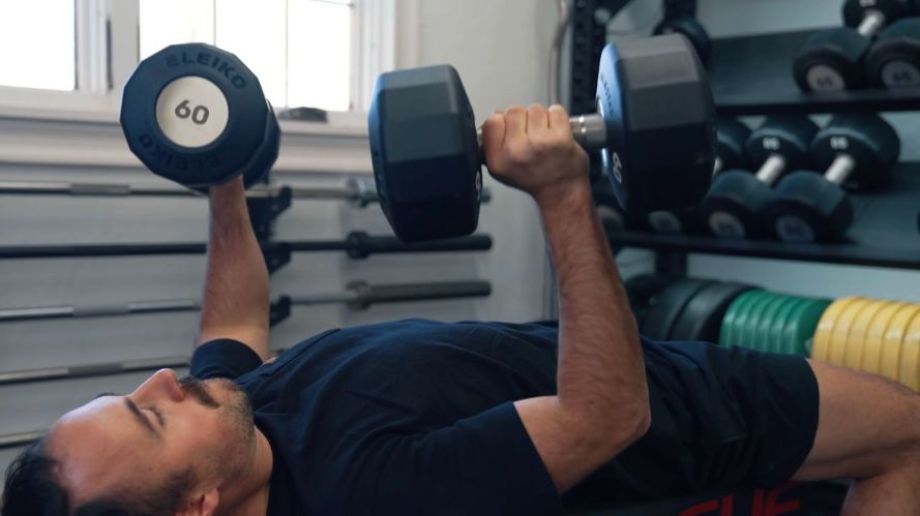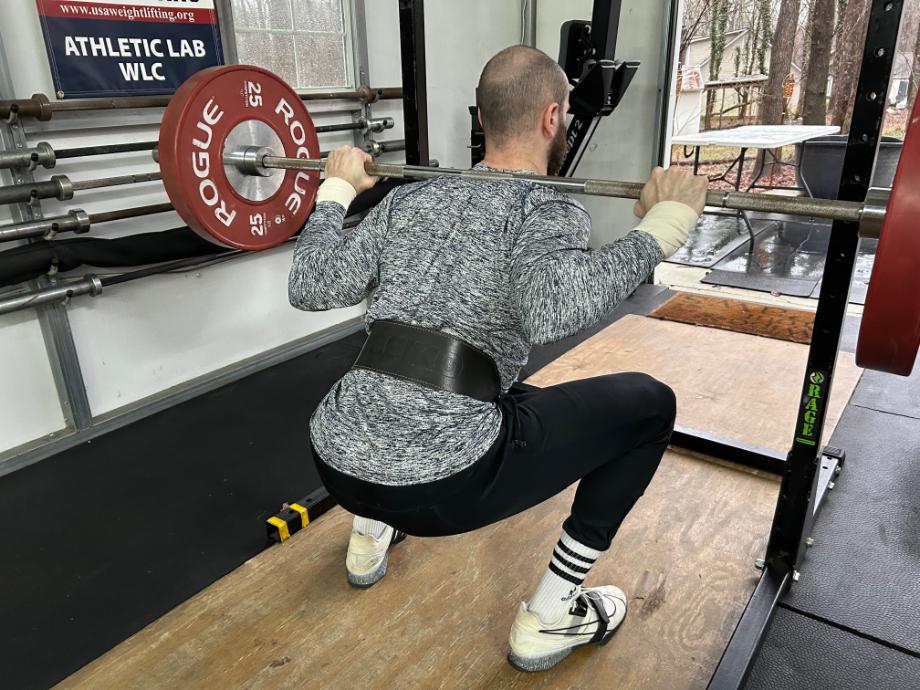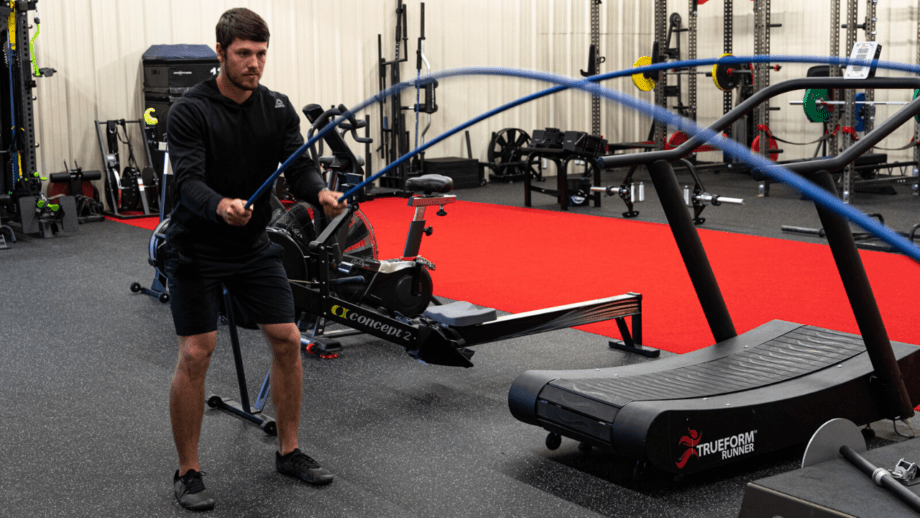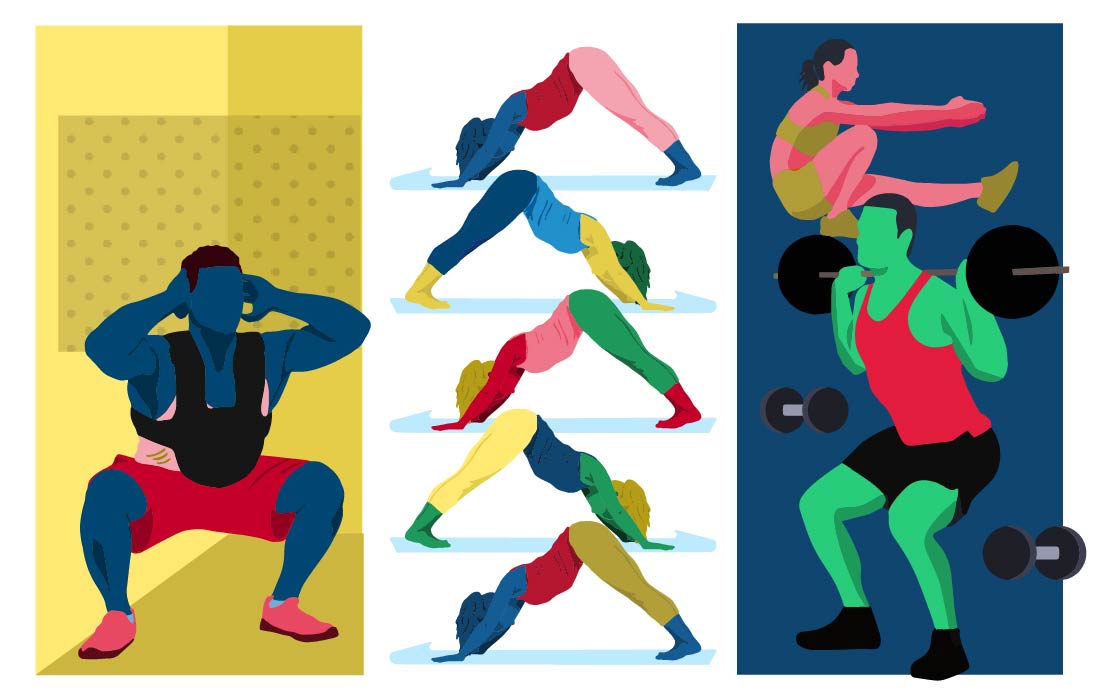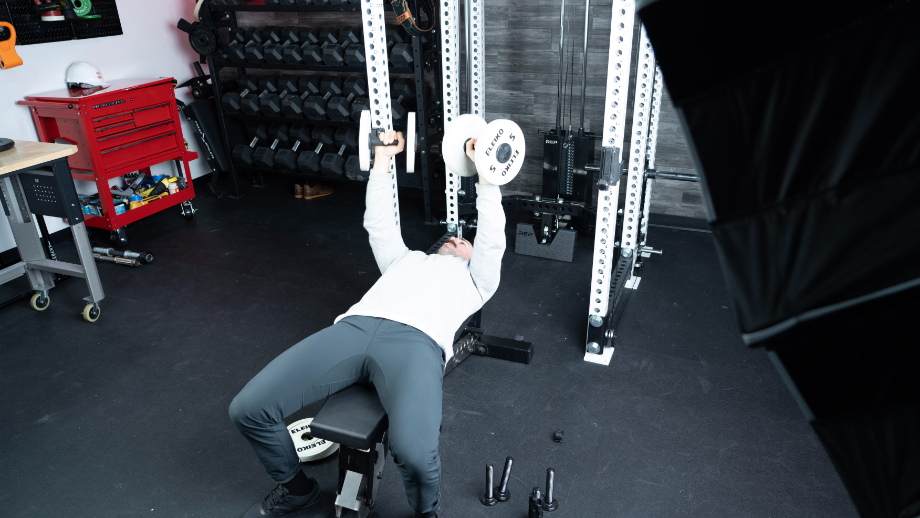You’re browsing on Amazon to buy dumbbells for your strength training workouts in your home gym. Resistance bands, floor mats, and maybe even cardio equipment were easy to buy, but then you might be thinking, what size dumbbells should I buy? Because there are many sizes to choose from, where do I start?
Dumbbells are one of the most versatile pieces of fitness equipment you can buy for your home gym, helping to build muscle, intermuscular coordination, and unilateral strength. In this article, we’ll get into tips for finding suitable weights for your dumbbell exercises and choosing the correct weight for upper- and lower-body exercises while using your fitness goals as a guide. As purchasing dumbbells is an investment, we’ll consider the advantages of buying a set of adjustable dumbbells versus just a few fixed ones, too. Let’s dive in.
Tips for Beginners
When starting a resistance-training journey, lifters may be gung-ho and overestimate how much they can lift. Or, they may be super careful and underestimate what they can lift. When selecting dumbbell weights, you need to take the time to find the right weight for the muscles you’re targeting and have a goal in mind, whether fat loss or hypertrophy, or muscle growth.
Here are three tips to help you select the correct weight.
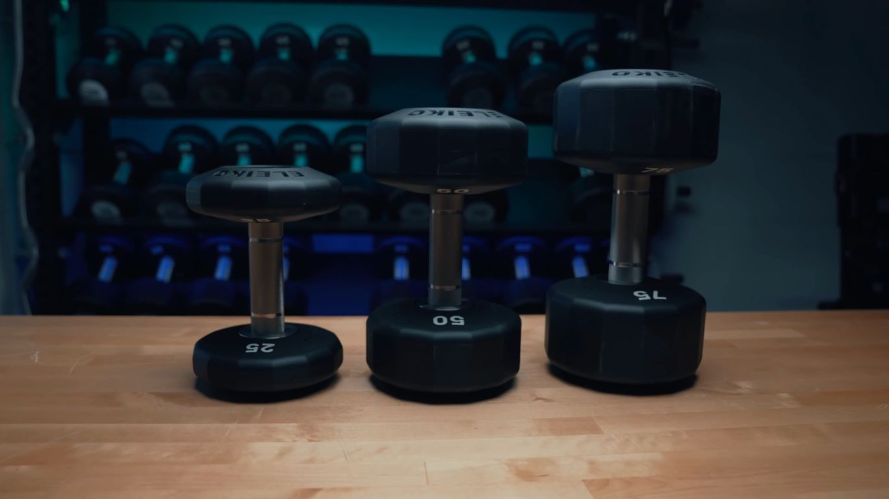
1. Know Your Goal
Weights and reps have an inverse relationship. When the weight goes up, the reps go down; when the reps go up, the weight you lift decreases. This is why it helps to know your goal before you start. If your focus is getting stronger, fewer reps with a heavier weight and longer rest periods are in order. But if your goal is fat loss or muscle-building, more reps with moderate weight and shorter rest periods are best.
Knowing your goal while lifting weights (and your fitness level) before you pick up a dumbbell goes a long way in helping you select the right weight.
2. Can You Feel It?
Say you pick up a pair of 10-pound dumbbells for 15 reps of biceps curls. You’re curling away for 15 reps, and you don’t feel a thing. Or you’re performing a chest press with 30-pound dumbbells in each hand, trying to get to eight reps, and you can only get to six. In both examples, the weight is either too light or too heavy respectively.
Once you know the number of reps you’re doing, completing the set while feeling the burn with the last two or three reps is vital. If you cannot complete the rep range, the weight is too heavy, or if you don’t feel a thing, the weight is too light.
3. Form And Safety
You want to push yourselves to meet your goals faster, but never at the expense of good form and safety. Lifting with poor form over time may lead to heartache and injury. When choosing the right weight, ensuring you feel the burn is great but not at the expense of poor form and potential harm. Your safety is the No. 1 priority when choosing a load.
Choosing the Right Dumbbell Weight for Specific Exercises
Bigger muscles like the quads and glutes are stronger and can lift more weight than your triceps. Plus, if you’re performing a lunge variation using multiple muscle groups, you’ll be able to lift more than a dumbbell lateral raise. Here is a guide to choosing the right dumbbell weight for lower- and upper-body exercises and isolation and compound exercises.
Note: Choosing the right weight for a particular exercise is part science and part guesswork and requires patience and experimentation.
Lower-Body Exercises
The lower body consists of the quads, adductors, calves, and glutes, among other muscles. With compound dumbbell leg exercises like squats, these muscles work in unison to complete the rep. You should use a moderate to heavier dumbbell when your lower body muscles work together.
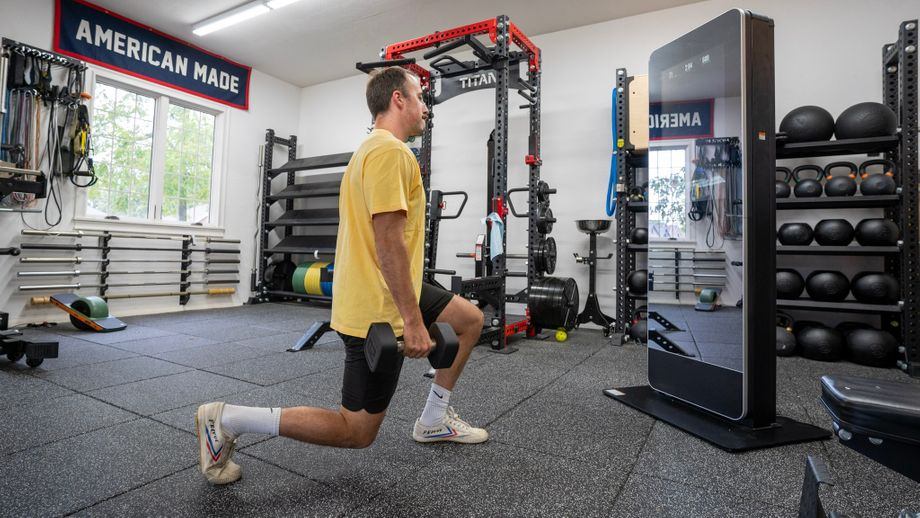
Upper-Body Exercises
The major muscles of the upper body are the chest, triceps, deltoids, forearms, biceps and back, and lats. Upper-body exercises like presses and rows that use multiple muscle groups, and you’ll be able to lift more weight with those than with say, a triceps extension which targets the small triceps muscles Generally, you should be able to row more weight than you can press because the lats and upper back are bigger and stronger muscles than the chest.
Isolation vs Compound Exercises
Isolation exercises focus on one muscle, like biceps curls or lateral raises. Compound exercises train two or more muscle groups and work more muscle mass with exercises such as dumbbell bench presses, dumbbell deadlifts, or shoulder presses. Because compound exercise involves multiple muscle groups, you should be able to use heavier dumbbells than for isolation exercises like lateral raises.
Use Your Fitness Goals to Guide You
Your fitness goals play a vital role when choosing the correct size dumbbells for you. Here are a few general recommendations for matching dumbbell weight to your goals.
Weight Loss & Muscle Building
These are together because they require similar training; the only difference is whether you eat for weight loss or muscle gain. Gaining and retaining muscle during a fat-loss phase is crucial because muscle is active tissue that burns more calories. More muscle equals more calories burned per pound of body weight.
Muscle is built in all rep ranges, but spending time in the eight- to 15-rep range works well here. This requires moderate to heavy dumbbells to challenge your muscles in this rep range. You shouldn’t squat with a 15-pound dumbbell when you’re capable of squatting with a 35-pound dumbbell.
Muscular Endurance
Muscle endurance requires more reps per set and fewer sets. Here you’ll work in the 15 to 25 rep range with shorter rest periods to challenge muscle endurance. There is an inverse relationship between reps and weights; when reps go up, weight goes down. Lighter weights are needed if your goal is to build muscular endurance.
Strength
The barbell is the best tool to build strength, but you can still build strength with dumbbells even though they are better suited for the above-mentioned goals. Working in the four to eight-rep range with heavy weights with longer rest periods works best.
Fixed Dumbbells vs Adjustable Dumbbells
You have two primary choices when buying dumbbells for your weightlifting workouts: adjustable dumbbells or a fixed dumbbell set. Here are the advantages of both, depending on budget and personal preference.
Fixed Dumbbell Set
Sets of dumbbells come in a hex or round shape and come in rubber, iron, and neoprene. The hex rubber dumbbells are great for groundwork as they don’t move while on the ground, making them more efficient for renegade rows, neutral grip push-ups, and weighted burpees. The rubber and neoprene dumbbells (round and hex) don’t scuff and scratch as easily and leave minimal marks on the floor.
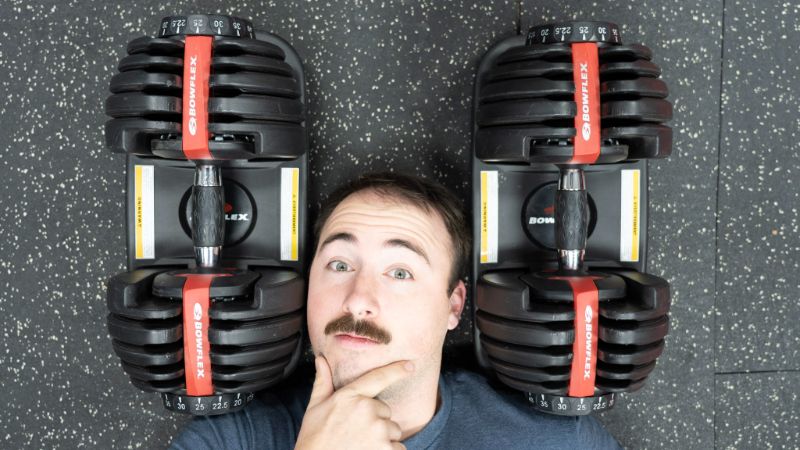
Adjustable Dumbbells
With a click of the dial, you can change to different weights instantly rather than putting the fixed weighted dumbbell down and choosing another pair of dumbbells. Adjustable dumbbells cost more upfront than one pair of fixed-weight dumbbells, but may cost much less than if you bought each pair of fixed dumbbells individually.
Adjustable dumbbells are more space-friendly than a dumbbell set and usually go up in smaller increments of 2.5 pounds rather than 5 pounds like regular dumbbells. Going up in small increments makes progression easier than fixed dumbbells and is great for your full-body workout. Plus, they’re more convenient to travel with because they’re easily transportable.
RELATED: The Best Adjustable Dumbbells
Final Thoughts on What Size Dumbbells Should I Buy
When it comes to buying dumbbells, knowing your goals, the body parts you’ll be training, and the exercises you need them for helps determine what size you should buy. Once you know that, you can choose between a fixed dumbbell sets or adjustable dumbbells. Both have advantages, and it’s a matter of your budget and personal preferences.
No matter what dumbbells you buy, they are worthwhile investments in your health and fitness.
FAQ: What Size Dumbbells Should I Buy?
What size dumbbells should I start with?
Lifting between 10 to 15 reps with good form is a great start, so pick an amount of weight you can achieve this goal with. You need to build good form and technique with any exercise before adding a significant load, and doing more reps at a light weight at the beginning helps this.
What size dumbbells do I need to build muscle?
The ideal rep range to build muscle is eight to 15 reps. Pick whatever size dumbbell you can lift for at least eight reps on the main compound lifts of rows, squats, and presses. These three exercises and their variations are great for building muscle.
What weight of dumbbell should I use?
The weight of the dumbbell you should use depends on whether you’re performing a compound or isolation exercise. Compound exercises require extra weight to challenge muscles, while isolation exercises require less weight because you are training just one muscle group. Plus, your fitness goals determine dumbbell weight. Moderate to heavy dumbbells are needed for muscle and fat loss. If it is muscle endurance you’re going after, a lighter dumbbell is required.
What size dumbbells should I use to tone my arms?
To tone your arms, you need to build muscle, and to do that, you need a weight to challenge your biceps, forearms, and triceps with a weight you can lift between eight to 15 reps.


